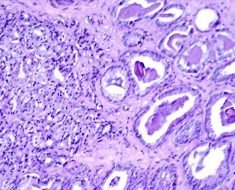Nearly all major neurodegenerative diseases—from Alzheimer’s to Parkinson’s—are defined and diagnosed by the presence of one of four proteins that have gone rogue: tau, amyloid-beta (Aβ), alpha-synuclein (α-syn), or TDP-43. As such, investigational drugs and studies aimed at preventing or slowing the disease often hone in on just one of these respective proteins. However, targeting multiple proteins—known as “proteinopathies”—at once may be the real key, according to a recent study published in Brain by Penn Medicine researchers.
These so-called “proteinopathies”—misfolded proteins that accumulate and destroy neurons—co-exist in varying degrees across all of the different neurodegenerative disorders and may instigate each other to drive disease severity in many aging patients. The prevalence of these co-pathologies suggests that each disease may ultimately require combination therapy targeting multiple disease proteins, and not just a single therapy, in patients with both early and later-stage disease.
“Historically, the focus of most clinical trials has been on targeting the primary pathological proteins of a given neurodegenerative disease such as deposits of tau and Aβ for Alzheimer’s disease, but we see now that many of these disease-related aggregated proteins affect most older patients across a full spectrum of clinical and neuropathological presentations,” said senior author John Q. Trojanowski, MD, Ph.D., a professor of Pathology and Laboratory Medicine and director of Penn’s Institute on Aging. “This gives us additional leverage to find ways to detect patients’ specific proteinopathies with increasingly sophisticated biomarker and imaging technologies. This will allow us, and other researchers, to better match participants with specific targeted therapies in clinical trials.”
The study—which analyzed 766 autopsied brains at Penn’s Center for Neurodegenerative Disease Research (CNDR)—revealed that patients with more severe forms of their diseases had more co-pathologies. Researchers also found that increased age and the presence of the APOE ε4 allele—a typical gene variant associated with an increased risk for late-onset Alzheimer’s disease—are risk factors for co-pathologies.
The researchers studied patients with the following diseases: Alzheimer’s disease, Pick’s disease, corticobasal degeneration (CBD), progressive supranuclear palsy, multiple system atrophy, Parkinson’s disease with and without dementia, dementia with Lewy bodies, as well as frontotemporal lobar degeneration with TDP-43, amyotrophic lateral sclerosis, and primary age-related tauopathy (PART).
While co-pathologies have been observed in Alzheimer’s and Lewy body disease, tau, Aβ, α-syn, and TDP-43 co-pathologies are rarely reported in the other neurodegenerative diseases.
The CNDR researchers found that co-pathologies were common but varied among the disease groups, ranging from 27 to 81 percent of patients having co-pathologies. For example, 52 percent of patients with CBD, in which tau as the primary protein, had multiple other neurodegenerative disease protein deposits present.
Tau was nearly universal, with 92 to 100 percent of all patients having at least one form. Aβ was next, with 20 to 57 percent of patients having at least one type of protein deposit, while α-syn pathology, typically seen in Parkinson’s disease, was less common, with 4 to 16 percent. TDP-43 deposits, which are characteristic pathological signatures of frontotemporal lobar degeneration and amyotrophic lateral sclerosis, were the rarest, with 0 to 16 percent of patients having these deposits.
In several neurodegenerative diseases, co-pathologies increased more considerably. For example, in patients with Alzheimer’s disease (tau and Aβ deposits are the primary signatures), α-syn pathology—similar to that of a Lewy body—increased by up to 55 percent and TDP-43 by up to 40 percent.
The findings not only show a high prevalence of co-pathologies, but also suggest a patient’s primary pathological protein may influence co-pathology prevalence and severity, as shown in patients with Alzheimer’s and Lewy body disease patients.
The presence of multiple co-pathologies increased from 9 percent to 25 percent between intermediate Alzheimer’s and higher-level Alzheimer’s patients, and from 0 percent to 21 percent between brainstem- or amygdala-only Lewy body disease and the more aggressive neocortical Lewy body disease.
These findings support the “proteopathic seeding” hypothesis that has been previously established in model systems of neurodegenerative diseases. Misfolded proteins may directly “cross-seed” other normal, vulnerable proteins to accumulate and clump via a cell-to-cell transfer of toxic proteins.
Source: Read Full Article





